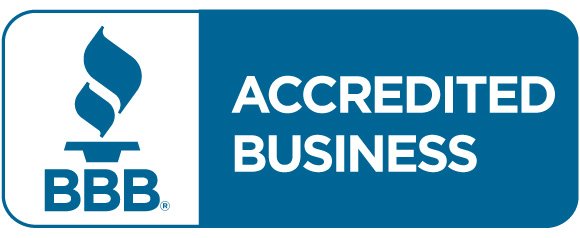The real estate market continues to experience a significant transformation this week, characterized by cooling market conditions, major regulatory adjustments, and emerging technology solutions. After years of extreme seller advantage, the industry is entering a rebalancing phase that fundamentally alters dynamics for agents, buyers, and sellers alike. Key developments include moderating price growth, elevated but stable mortgage rates, groundbreaking PropTech innovations, and the ongoing implementation of landmark regulatory changes that reshape transaction structures.
Market Conditions and Pricing Trends
National Market Cooling Accelerates
The housing market’s transition toward more balanced conditions gained momentum in August 2025:
- Home price appreciation decelerated to just 1.7% YoY in June 2025, compared to 5.4% previously.
- Active housing inventory surged 22.8% YoY to 1.1 million properties—the highest since pre-pandemic levels.
- Homes are spending six days longer on the market.
- 21.5% of listings featured price reductions (up from 17% last year).
- Delistings jumped 47% YoY, as frustrated sellers withdrew properties instead of lowering prices.
Realtor.com Senior Economist Jake Krimmel noted that many sellers “still aren’t pricing to sell,” creating longer market times and eventual withdrawals.
Regional Market Divergence Intensifies
- Sun Belt markets are declining fastest: Austin (–6.5%), Miami (–19% over 3 years), Atlanta (–4.4%), Denver (–4.1%), San Diego (–2.5%).
- In contrast, Northeast and Midwest markets remain strong: New York (+3.5%), Connecticut (+8.4%), Rhode Island (+8.4%).
- Economists describe a “two-speed” housing market: inventory-rich Sun Belt markets see declines while supply-constrained Northeastern metros sustain growth.
Supply-Demand Rebalancing
- Months of supply rose to ~3.0, nearing the 5–6 month range of balanced markets.
- New homes for sale reached 481,000 units, the highest since 2007.
- Builder response: 38% cut prices in July (avg. reduction 5%), and 62% offered incentives.
Sources:
New Real Estate Technology Launches
AI-Driven Property Search Innovation
- Jitty (UK-based startup) raised $3.8M seed funding for natural language home search. Users can search queries like “big garden” or “45 min commute to Liverpool St.” Over 250,000 searches have already been logged.
Comprehensive Data Analytics Platforms
- Revalo, launched by Land Advisors Organization, aggregates U.S. parcel data and provides advanced visualization tools. Currently available for free in preview on iOS/Android.
Commercial Real Estate Innovation
- Buildout’s Rethink+ launched in August 2025 with seamless CRM integration to improve CRE prospecting and workflows.
Emerging Technology Trends
- AI-powered AVMs are outperforming traditional appraisers. Market projected to hit $1.8T by 2030.
- VR/AR 3D tours now standard, reducing days on market.
- Blockchain/tokenization platforms (Propy, RealT, SolidBlock) enabling fractional ownership.
- IoT and smart building tech projected to surpass $170B in spending by 2025.
Regulatory Changes Affecting Agents and Transactions
NAR Settlement Implementation Impact
- Sellers are no longer required to pay buyer-agent commissions automatically. MLSs cannot display compensation offers.
- Average buyer-agent commission dipped slightly to 2.37%, from 2.45% pre-rule.
- Seller commissions dropped from 5.64% to 4.96%.
- Mandatory written buyer-broker agreements before showings, requiring explicit fee disclosure and negotiability.
- States are passing their own rules: Missouri’s HB 595 & 596 (effective Aug 28, 2025) mandate written agency agreements for all brokerage services.
Sources:
Economic Factors Driving Buyer/Seller Decisions
Mortgage Rate Environment and Affordability Crisis
- 30-year fixed mortgage rates stable at ~6.7%, unlikely to fall below 6% until late 2025.
- Home prices up 55% since 2020; buyers now need ~$112,000 annual income to afford a median home.
- Affordability constraints sidelining millions of buyers.
Labor Market Stability Concerns
- Unemployment steady at 4.2%, but July’s jobs report showed weaker growth.
- Federal hiring freeze and job cuts adding uncertainty.
Inflation and Policy Uncertainty
- Core CPI rose 2.8% YoY in June, housing costs remain the biggest inflation driver (+3.8% shelter costs).
- Fed rate cuts unlikely to meaningfully lower mortgage rates without more housing supply.
Wealth Effects and Market Psychology
- Homeowners with equity remain financially strong, supporting some activity.
- 71% of consumers believe it’s a bad time to buy (Fannie Mae’s HPSI).
- Lock-in effect remains strong—few sellers willing to trade low-rate mortgages for today’s higher rates.
Sources:
Conclusion
The real estate industry in August 2025 stands at a critical inflection point. Cooling market conditions, new regulations, tech innovation, and persistent affordability challenges are reshaping the landscape. Regional divergence is deepening: Sun Belt metros face significant declines while Northeast/Midwest markets remain resilient.
Success now requires sharper pricing, strict compliance, adoption of PropTech, and close attention to local market dynamics. The industry’s transformation is creating both risks and opportunities for professionals who adapt effectively.


